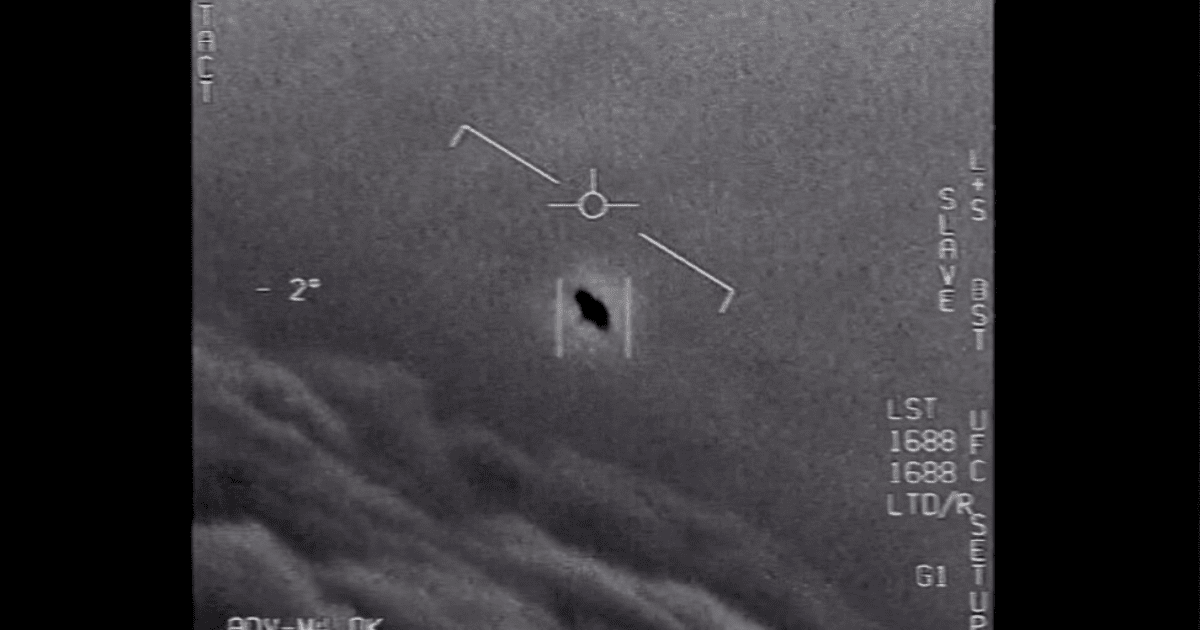In the last days, the US armed forces have shot down several unidentified objects that were within the airspace of Canada and the US. The first official statements about its origin were ambiguous, without ruling out the extraterrestrial origin. In fact, for months now recurring news has been heard about sightings of numerous unidentified flying objects, the famous UFOs or UFOs. What is behind this phenomenon?
Now known as UAP (Unidentified Aerial Phenomena), or as FANI in its Spanish translation (Unidentified Aerial Phenomena), these events confront us with certain fears and, in any case, with uncertainty.
When Wells and Welles panicked
Possibly the most evident case of panic took place with the radio adaptation in 1938 by Orson Welles from the science fiction novel War of the Worldswritten in 1898 by H.G. Wells. The narration in his powerful voice sparked some social alarm in New Jersey and New York in 1938, when many listeners believed that an invasion by aliens from Mars had begun.
Since then, sightings of supposed alien spacecraft have occurred unevenly, both in time and due to their geographical dispersion. The proliferation of digital cameras and the use of social networks have given rise to some apparently enigmatic testimonies, especially when they have been carried out by airplane pilots, both civilian and military.
The official recognition of the phenomenon
After decades of being ignored by the academic world and the official establishment, the Office of the Secretary of Defense of the United States created in mid-2022 the All-domain Anomaly Resolution Office (AARO), to study the sightings. In this way, resources and committees that had investigated the phenomena in a dispersed manner during the previous years were centralized.
The first reports are already availableand the office is mandated by the Congress of that country to report on an ongoing basis.
NASA has also started a independent study. It is focused on identifying the available data and finding the best way to collect and use it to advance the scientific understanding of NIAPs.
What is a FAN?
As the name itself indicates, any flying object that is not clearly identified as an aerospace craft is classified as FANI. Its true nature, if it is revealed, can be very varied. It includes both natural phenomena and others produced, in various ways, by human artifacts.
Among the natural causes are meteorological or atmospheric phenomena. Here clouds with peculiar shapes and colors have a place; the reflections of sunlight (or from some planet) on the water and/or the clouds; the Rainbow; he green Thunder, an optical phenomenon that occurs just before the Sun sets; the parhelios, reflections of sunlight around the star; Kern’s arcs, circles of light that form in cold areas; and the solar pillarslight beams reflected by ice crystals.
Another potential source of FANI is the Aurora borealisa fascinating spectacle that only usually occurs in regions near the poles.
Human technology also generates them. Among the latter explanations are aircraft trails that have been illuminated in a particular way; those produced by the launches of some space rockets (such as the quirky swirl which left a Falcon 9 spacecraft); weather balloons (and now allegedly spies); airplanes and other civil and military devices, especially when the Sun hits the fairings from specific angles; or satellites in orbit, especially those that are very close to the ground and, therefore, move at a high speed relative to the observer.
The International Space Station, with its large solar arrays, is especially visible, though now the huge number of satellite flotillas has exacerbated the problem. In any case, even the most exhaustive investigation leaves a number of sightings unexplained. Does this mean that they have an extraterrestrial origin?
Are intelligent civilizations “visiting” us?
An alternative for those events that fall outside of the above explanations lies in the unlikely visit of an advanced alien civilization. After all, humanity has begun the exploration of the Solar System and, perhaps, its colonization. We even began to consider the next steps beyond from its confines. If intelligent life existed on other planets, they could have started this process much earlier.
What does our astrobiological knowledge tell us? On the positive side, the Milky Way, our galaxy, contains about 400 billion stars, many of which are surrounded by their own cohort of planets. Many of these should have suitable conditions for the appearance of liquid water (the simplest prebiological environment). The rapid appearance of life on earth points to a great abundance of it in a multiplicity of planetary systems.
However, the maintenance of biological activity, especially of multicellular life, requires very long-term stability conditions that may not easily occur.
In addition, our systematic searches for intelligent life through radio wave scans of the nearest stars, such as the SETI initiativehave given zero results. Despite the few and ambiguous signs, never repeated, in hundreds of light years there is no one emitting artificial signals towards other systems. In addition, the material and energy needs would be so enormous that they would probably make interstellar travel unfeasible.
Given these facts, it only remains to apply the criteria of the philosopher of the XIII-XIV centuries William of Ockhamhis lex parsimoniae or Ockham’s razor: other things being equal, the simplest explanation is usually the true one. We are alone, at least on our beloved and battered Earth.
David Barrado NavascuesProfessor of Research Astrophysics, Astrobiology Center (INTA-CSIC)
This article was originally published on The Conversation. read the original.















